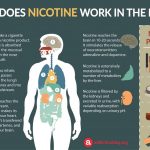
Contents
- 1 Rocky Mountain Spotted Fever
- 1.0.1 Where do most RMSF cases occur in the U.S.?
- 1.0.2 What causes Rocky Mountain spotted fever?
- 1.0.3 How is Rocky Mountain spotted fever transmitted?
- 1.0.4 What are the risk factors for Rocky Mountain spotted fever?
- 1.0.5 Is Rocky Mountain spotted fever contagious?
- 1.0.6 What are the symptoms and signs of Rocky Mountain spotted fever?
- 1.0.7 What is the incubation period for Rocky Mountain spotted fever?
- 1.0.8 What specialists treat Rocky Mountain spotted fever?
- 1.0.9 How is Rocky Mountain spotted fever diagnosed?
- 1.0.10 What is the treatment for Rocky Mountain spotted fever?
- 1.0.11 What is the prognosis of Rocky Mountain spotted fever?
- 1.0.12 What are the long-term effects of Rocky Mountain spotted fever?
- 1.0.13 Is there a vaccine for Rocky Mountain spotted fever?
- 1.0.14 Is it possible to prevent Rocky Mountain spotted fever?
Rocky Mountain Spotted Fever
Rocky Mountain spotted fever (RMSF) is a tick-borne disease caused by the bacterium Rickettsia rickettsii. This illness is found in North, Central, and South America and is transmitted via infected tick bites. It affects blood vessel linings (causing vasculitis), leading to vessel leakage and damage to internal organs. It is the most common fatal tick-borne disease in the United States, with a less than 1% fatality rate.
Where do most RMSF cases occur in the U.S.?
RMSF cases have been reported throughout the country, not just in the Rocky Mountain region. Arkansas, Missouri, North Carolina, Oklahoma, and Tennessee account for over 60% of reported cases. In 2010, there were around 2,000 cases reported in the U.S., more than double the annual cases reported in the 1990s.
What causes Rocky Mountain spotted fever?
RMSF is caused by the bacterium Rickettsia rickettsii, transmitted through tick bites. Ticks known to carry this bacterium in the United States include the Rocky Mountain wood tick (Dermacentor andersoni), the American dog tick (Dermacentor variabilis), and the brown dog tick (Rhipicephalus sanguineus).
How is Rocky Mountain spotted fever transmitted?
The bacterium requires at least six to 10 hours to transmit through tick bites, although transmission can take up to 24 hours in some cases.
What are the risk factors for Rocky Mountain spotted fever?
Being outdoors in areas where ticks carrying Rickettsia rickettsii are prevalent is the main risk factor for contracting the disease.
Although named after the Rocky Mountains, RMSF is most commonly reported in the south Atlantic and south central regions of the United States. The incidence increases during the summer months when ticks are most active and people spend more time outdoors. However, RMSF can occur at any time of the year.
Is Rocky Mountain spotted fever contagious?
RMSF is not transmitted from person to person but through tick bites. However, there have been rare cases of transmission through blood transfusions.
What are the symptoms and signs of Rocky Mountain spotted fever?
RMSF typically begins with headaches, high fever, and muscle aches. Some individuals may also experience abdominal pain, nausea, and vomiting. A rash usually appears two to five days after fever onset, starting around the ankles, forearms, and wrists. The rash consists of small, flat pink spots that spread to the chest, back, and extremities, sometimes also affecting the palms and soles. In around 10% of cases, no rash develops, making RMSF diagnosis more challenging. Around 35% to 60% of patients may develop a red or purple spotty rash (petechiae) around the sixth day or later, indicating a more severe disease.
The damage to blood vessel linings can lead to complications such as kidney failure, gangrene in fingers or toes, brain inflammation, heart or lung inflammation, and eye damage.
IMAGES
What is the incubation period for Rocky Mountain spotted fever?
The signs and symptoms of RMSF can appear within a few days or be delayed by up to two weeks. The typical rash usually appears two to five days after fever onset, but it may not appear at all.
What specialists treat Rocky Mountain spotted fever?
RMSF is usually initially treated by primary-care doctors or emergency-medicine specialists. Depending on the severity, an infectious-disease specialist may be consulted.
How is Rocky Mountain spotted fever diagnosed?
Diagnosing RMSF can be difficult as early symptoms are common in many other infections. The presence of the classic rash helps establish the diagnosis, but not all patients develop a rash. A tentative clinical diagnosis can be made based on symptoms, physical exam, and possible tick exposure history. Treatment should be started promptly, even before confirmatory tests. Specialized lab tests can confirm the diagnosis, but availability varies, and results may take time.
RMSF infection triggers the production of antibodies within the first seven to 10 days. Confirmatory tests require two samples taken at different times. Other blood tests monitor potential complications, and additional tests depend on symptoms and disease severity.
What is the treatment for Rocky Mountain spotted fever?
The treatment for RMSF is antibiotics, with doxycycline being the preferred choice for children and adults. Prompt antibiotic treatment, even before confirmatory tests, reduces the mortality rate from 20% to less than 1%. If doxycycline is not an option, chloramphenicol can be used. Delayed treatment can lead to life-threatening complications.
Some patients with mild symptoms can be treated as outpatients, while others require hospital admission for close monitoring and further evaluation.
What is the prognosis of Rocky Mountain spotted fever?
Early diagnosis and prompt treatment result in a very good prognosis, with most patients fully recovering without long-term disabilities. Delayed diagnosis and treatment contribute to higher complication rates and mortality. The mortality rate for RMSF in the United States is currently less than 1%. In the pre-antibiotic era, it was around 30%.
What are the long-term effects of Rocky Mountain spotted fever?
The long-term effects of RMSF vary depending on disease severity. While many patients recover fully, others may experience permanent neurological problems and internal organ dysfunction.
Is there a vaccine for Rocky Mountain spotted fever?
Currently, there are no vaccines available for RMSF. The best preventive measure is to avoid tick bites.
Is it possible to prevent Rocky Mountain spotted fever?
RMSF can be prevented by following these precautionary measures:
- Wear long pants and sleeves when outdoors, especially in wooded areas.
- Use insect repellents containing DEET.
- Check for ticks on yourself, family members, and pets after being in high-risk areas.
- If a tick is found, use tweezers to remove it without crushing it, ensuring the whole tick is removed.
- If possible, keep the tick to identify the species if necessary.
By clicking Submit, I agree to the MedicineNet’s Terms & Conditions & Privacy Policy and understand that I may opt out of MedicineNet’s subscriptions at any time.
Tintinalli, Judith E., et al. Tintinalli’s Emergency Medicine: A Comprehensive Study Guide, 7th ed., New York: McGraw Hill Professional, 2010; 1071-1072.
United States. Centers for Disease Control and Prevention. "Rocky Mountain Spotted Fever (RMSF)." May 7, 2019. .


